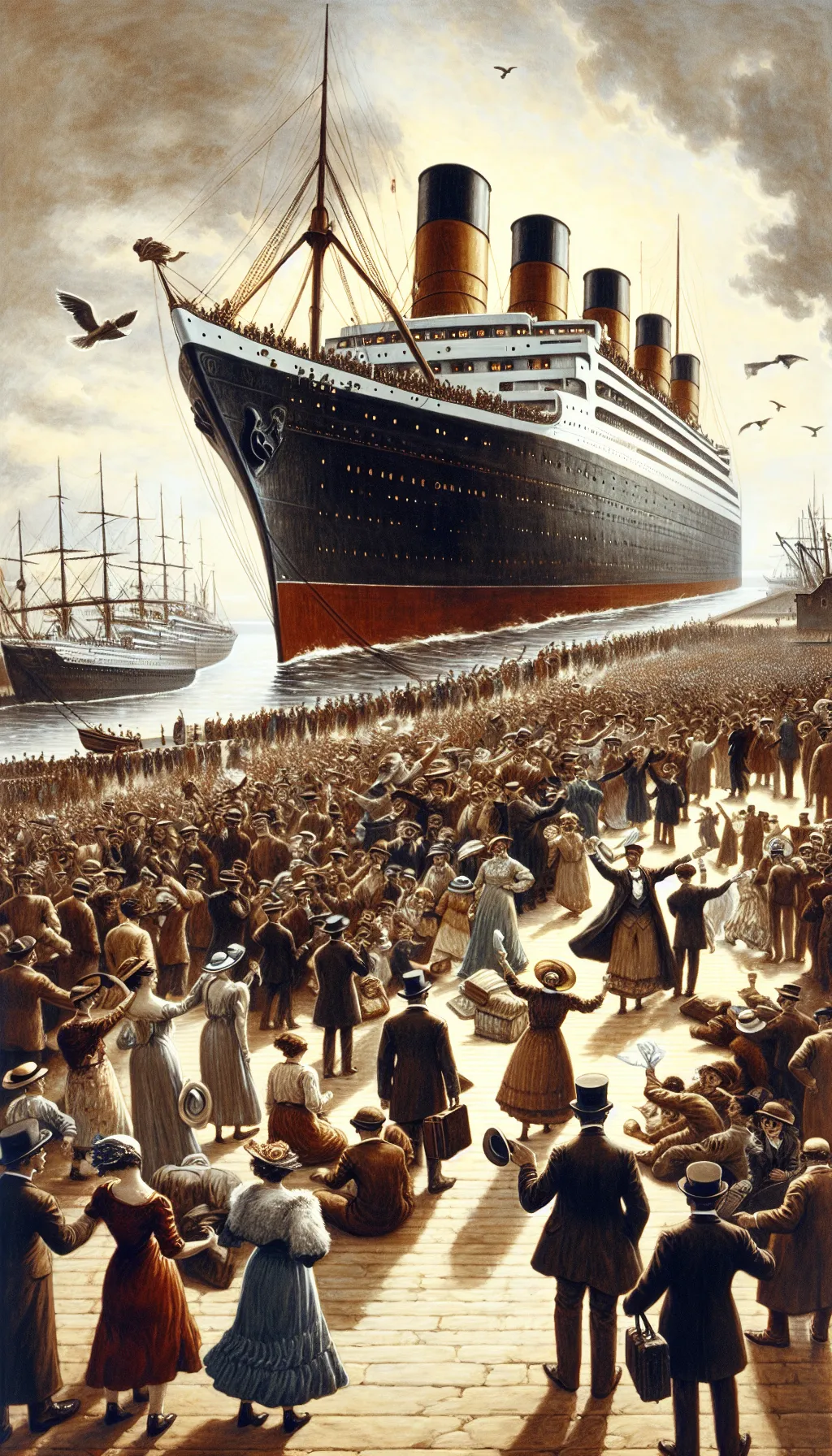United Kingdom – The Ill-Fated Departure: RMS Titanic Sets Sail - April 10, 1912
TLDR;
- Event: The RMS Titanic, deemed ‘unsinkable,’ embarked on its maiden voyage from Southampton on April 10, 1912, carrying over 2,200 passengers and crew.
- Tragedy: On April 14, the ship struck an iceberg in the North Atlantic, leading to its sinking and the loss of over 1,500 lives due to insufficient lifeboats.
- Aftermath: The disaster prompted major maritime safety reforms, including mandatory lifeboat capacity for all passengers and continuous radio monitoring.
- Legacy: The Titanic’s story remains a poignant reminder of human vulnerability and the importance of safety over luxury and confidence in technology.
–
Story
The air was electric with excitement as the RMS Titanic, the largest and most luxurious ship of its time, prepared to set sail from Southampton on April 10, 1912. Crowds gathered, waving handkerchiefs and shouting farewells, as the ship’s horn bellowed a deep, resonant note. Among the passengers were hopeful emigrants, wealthy travelers, and a small number of Australians, alongside a majority of British, Irish, and American passengers, all eager to begin a new chapter across the Atlantic.

The Titanic was a marvel of modern engineering, a floating palace boasting opulent dining rooms, a grand staircase, and even a swimming pool. It was surrounded by a myth of being ‘unsinkable,’ a term more of popular myth than official designation, reflecting the era’s confidence in human ingenuity and ambition. As the ship pulled away from the dock, its passengers settled in, unaware of the fate that awaited them.
The journey began smoothly, with the Titanic gliding through the calm waters of the English Channel. Spirits were high, and the ship’s amenities were enjoyed by all. However, beneath the surface of this grand voyage lay a fatal flaw: the ship carried too few lifeboats for the number of passengers on board, a consequence of outdated maritime safety regulations based on ship tonnage rather than passenger capacity, not merely an aesthetic choice.
This oversight would prove catastrophic. Just four days later, on April 14, the Titanic struck an iceberg in the North Atlantic. The ship, once thought invulnerable, was doomed, and the full scale of the disaster became known only after the fact, as wireless communication of the era could not convey real-time updates. Over 1,500 lives were lost, including passengers from various nationalities who had embarked on the journey of a lifetime.
The departure of the Titanic was not just the beginning of a voyage; it was the prelude to one of the most infamous maritime disasters in history. The lessons learned from this tragedy led to significant improvements in maritime safety regulations, such as mandatory lifeboat capacity for all passengers and 24-hour radio monitoring, aiming to prevent such a disaster from happening again, though the sea would continue to claim lives in other tragedies.
–
| Would a different design decision have changed the fate of the Titanic? |